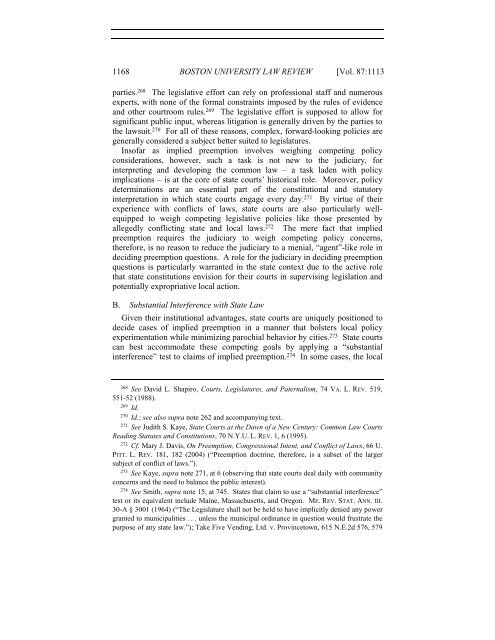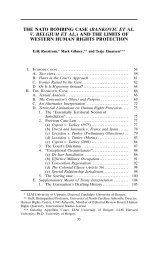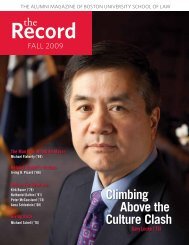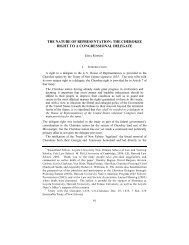INTRASTATE PREEMPTION
INTRASTATE PREEMPTION
INTRASTATE PREEMPTION
- No tags were found...
You also want an ePaper? Increase the reach of your titles
YUMPU automatically turns print PDFs into web optimized ePapers that Google loves.
1168 BOSTON UNIVERSITY LAW REVIEW [Vol. 87:1113parties. 268 The legislative effort can rely on professional staff and numerousexperts, with none of the formal constraints imposed by the rules of evidenceand other courtroom rules. 269 The legislative effort is supposed to allow forsignificant public input, whereas litigation is generally driven by the parties tothe lawsuit. 270 For all of these reasons, complex, forward-looking policies aregenerally considered a subject better suited to legislatures.Insofar as implied preemption involves weighing competing policyconsiderations, however, such a task is not new to the judiciary, forinterpreting and developing the common law – a task laden with policyimplications – is at the core of state courts’ historical role. Moreover, policydeterminations are an essential part of the constitutional and statutoryinterpretation in which state courts engage every day. 271 By virtue of theirexperience with conflicts of laws, state courts are also particularly wellequippedto weigh competing legislative policies like those presented byallegedly conflicting state and local laws. 272 The mere fact that impliedpreemption requires the judiciary to weigh competing policy concerns,therefore, is no reason to reduce the judiciary to a menial, “agent”-like role indeciding preemption questions. A role for the judiciary in deciding preemptionquestions is particularly warranted in the state context due to the active rolethat state constitutions envision for their courts in supervising legislation andpotentially expropriative local action.B. Substantial Interference with State LawGiven their institutional advantages, state courts are uniquely positioned todecide cases of implied preemption in a manner that bolsters local policyexperimentation while minimizing parochial behavior by cities. 273 State courtscan best accommodate these competing goals by applying a “substantialinterference” test to claims of implied preemption. 274 In some cases, the local268 See David L. Shapiro, Courts, Legislatures, and Paternalism, 74 VA. L. REV. 519,551-52 (1988).269 Id.270 Id.; see also supra note 262 and accompanying text.271 See Judith S. Kaye, State Courts at the Dawn of a New Century: Common Law CourtsReading Statutes and Constitutions, 70 N.Y.U. L. REV. 1, 6 (1995).272 Cf. Mary J. Davis, On Preemption, Congressional Intent, and Conflict of Laws, 66 U.PITT. L. REV. 181, 182 (2004) (“Preemption doctrine, therefore, is a subset of the largersubject of conflict of laws.”).273 See Kaye, supra note 271, at 6 (observing that state courts deal daily with communityconcerns and the need to balance the public interest).274 See Smith, supra note 15, at 745. States that claim to use a “substantial interference”test or its equivalent include Maine, Massachusetts, and Oregon. ME. REV. STAT. ANN. tit.30-A § 3001 (1964) (“The Legislature shall not be held to have implicitly denied any powergranted to municipalities . . . unless the municipal ordinance in question would frustrate thepurpose of any state law.”); Take Five Vending, Ltd. v. Provincetown, 615 N.E.2d 576, 579









